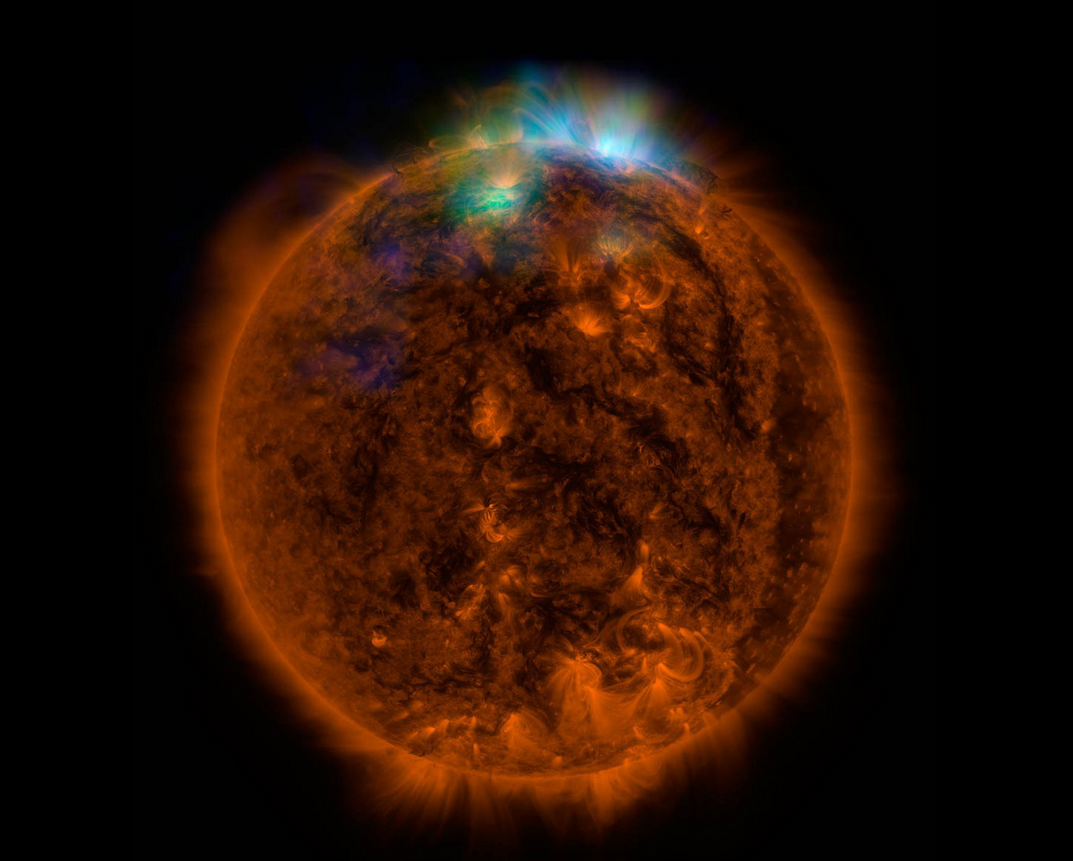
NASA’s NuSTAR probe has just snapped its first pictures of our sun, and they’re absolutely mind-blowing. NuSTAR — short for Nuclear Spectroscopic Telescope Array — is NASA’s more sensitive high-energy X-ray to date. It’s been orbiting Earth’s atmosphere since 2012, on a mission to observe far off high-energy X-ray signatures that could help us learn more about how stars collapse and form black holes or supernova, as well as other celestial pursuits; this is the first time the telescope has found its gazing eye peering much closer to home.
The image above, which is the most sensitive solar portrait ever captured in high-energy X-rays, may shed light on questions concerning sunspots. “NuSTAR will give us a unique look at the sun, from the deepest to the highest parts of its atmosphere,” said David Smith, a solar physicist and member of the NuSTAR team at University of California, Santa Cruz.

The parts of the picture contributed by the NuSTAR are the green and blue segments at the top, which depict solar high-energy emissions (blue means the emission is higher in energy than the green). This portion of the image was actually overlaid atop an ultraviolet picture of the sun taken by the Solar Dynamics Observatory, hence why the sun appears reddish in color.
Although the images were shot on December 22, 2014, the plan was initially proposed in 2007, long before NuSTAR was even launched. At time, the notion of aiming NASA’s most powerful deep space telescope at something so close to home seemed maddening. But NuSTAR was the only X-Ray telescope capable of looking upon the sun without damaging its sensors from the brightness; not even NASA’s Chandra X-ray observatory could accomplish this feat.
“NuSTAR will be exquisitely sensitive to the faintest X-ray activity happening in the solar atmosphere, and that includes possible nanoflares,” said David Smith, a solar physicist and member of the NuSTAR team at University of California, Santa Cruz.
By studying the nanoflares occurring along the sun’s surface, NASA hopes to understand why the sun’s outer atmosphere, called the corona, is significantly hotter than its surface. NASA explains that the corona is, on average, 1.8 million degrees Fahrenheit (1 million degrees Celsius), whereas, the surface of sun sits at the much cooler temperature 10,800 Fahrenheit (6,000 Celsius). Basically, the temperature difference is metaphorically like flame coming out of an ice cube. If the NuSTAR were to observe a nanoflare in action, the new information will solve this mystery.
What’s more, optimistic astrophysicists hope that NuSTAR will also be able to spot axions, the hypothetical elementary particular postulated as one of the components of dark matter. Recall that dark matter refers to the undetectable matter populating the universe at five times the amount of regular matter, but is currently undetectable outside of its effects on gravity. If axions truly exist, they would appear as a spot of X-rays in the center of the sun.
Source: NASA
Advertisement
Learn more about Electronic Products Magazine





